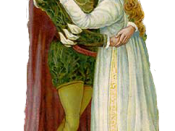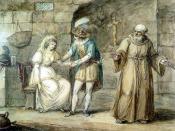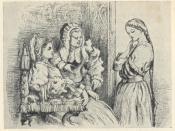Examine Act 3 Scene 5 of 'Romeo and Juliet' closely, how does Shakespeare ensure that the scene is one of dramatic interest and how could a production enhance its effects?
The tragedy of 'Romeo and Juliet' is one of Shakespeare's most famous plays. It was written in the late 16th century. The contemporary society is reflected throughout the text; one in which men rule and women are viewed as possessions. In comparison to its predecessor, Scene 5 is extremely long and mostly fast paced, shown by commas, Shakespeare's use of language and stage directions e.g. 'enter Nurse hastily'. This scene is pivotal to the play, things change as a result of this scene. Scene 5 also has a dramatic mood swings and strong language and by its end changes the audience's views on more than one character. Act 3 Scene 5 is focussed on Juliet, and she remains on stage throughout.
The scene begins with love, and ends in hate. It begins with the tenderness of Romeo and Juliet's love for each other, and ends with Capulet's rage that his daughter won't accept the arranged marriage to Paris.
The scene starts in a tender, loving mood, with Romeo and Juliet together on the morning after their wedding night. Shakespeare shows the couples unity by having them share a rhyming couplet. There is a lot of imagery relating to the lark and the nightingale. To start off, Juliet wishes it to be night and wants it to be the nightingale that sang, but Romeo is more realistic and knows that it was in fact the lark signifying dawn, his time to leave. The script states how light is their friend, day their enemy, 'more light and light, more dark and dark our woes'. There are many references like this to quite...


